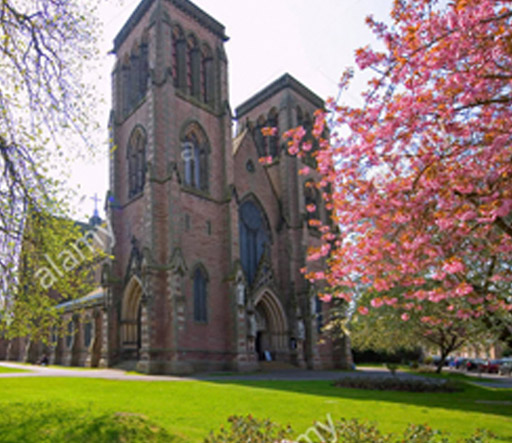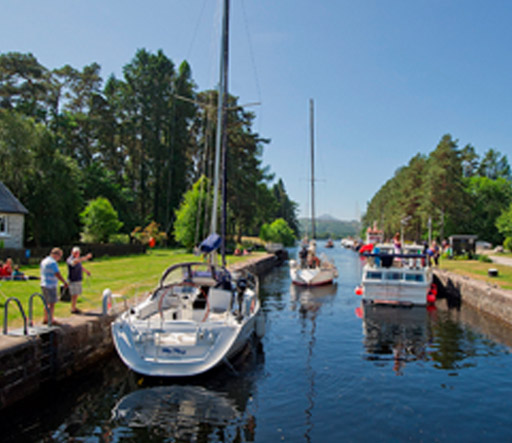
Loop of the Loch tour
THE Highlands are rich in history and blessed with some of the most beautiful and spectacular scenery in the world so come with us on a never-to-be-forgotten fun-filled adventure.
Dark and brooding, mysterious and menacing, whichever words you choose to use to describe one of the most famous stretches of water anywhere in the world, the only way to truly get a feel for Loch Ness is to experience it up close and personal.
Approximately 23 miles long, Loch Ness is the second largest loch by surface area after Loch Lomond, but due to its great depth, it is the largest by volume in the British Isles.
To give you a clearer idea of its vast size, Loch Ness contains more fresh water than all the lakes of England and Wales combined.
It is also the home of "NESSIE", a prehistoric-type monster that is often described as large in size with a long neck and one or more humps protruding from the water.
First brought to the world's attention nearly 90 years ago, Nessie divides option. Myth or fact? We'll leave it up to you to decide. But more about Loch Ness' most famous resident shortly.
You will be welcomed aboard Monster Tours' unique loop of the Loch Tour at INVERNESS CATHEDRAL, the seat of the Bishop of Moray, Ross and Caithness, and your adventure will last approximately four hours.
The first protestant cathedral to be completed in Gt Britain since the Reformation, Inverness Cathedral it is the northernmost cathedral in mainland Britain.
It took three years to build (1866-69) and contains a ring of 10 bells, which are the most northerly peal of change-ringing bells in the world.
Entry is free of charge and many first-time visitors are struck by the sense of peace and tranquility they experience when entering the building.

Heading out of Inverness
As we head out of Inverness - granted city status in 2000 - we cross the Caledonian Canal, which has 29 locks, four aqueducts and 10 bridges, and travel along the western shore of Loch Ness towards DRUMNADROCHIT.
Referred to locally as "Drum", Drumnadrochit houses the Loch Ness Centre and Exhibition where visitors can examine in detail the natural history and legend of Loch Ness and Nessie.
While the scientific community regards the Loch Ness Monster as a phenomenon without biological bases, explaining sightings as hoaxes, wishful thinking and the misidentification of mundane objects, they have failed to prove conclusively that Nessie is simply a figment of the imagination.
As far back as 565 AD, Saint Columba claimed to have encountered a band of Picts burying one of their number and who claimed that he had been the victim of a "Sea Monster" which mauled him and dragged him underwater. But it was not until 1933 that the monster gained popular interest when an article appeared in the Inverness Courier newspaper detailing the sighting of an enormous creature with the body of a whale rolling in the water by a local couple driving along the shores of Loch Ness.
Since then there have been countless claims of a "sighting" and there is even a full-time Nessie hunter based on the eastern shore. So, who knows, you may get lucky and catch a glimpse of Scotland's most famous monster.
A short drive from Drumnadrochit, Urquhart Castle stands guard over the loch. Part of the ruins date back to the 13th century and the fortress played a role in the Wars of Scottish Independence in the 14th century.
It was subsequently held as a royal castle, and granted to the Clan Grant in 1509. Urquhart was partially destroyed in 1992 to prevent its use by Jacobite forces, and subsequently decayed.
In the 20th century it was placed in state care as a monument an opened to the public. One of the largest and most visited castles in Scotland, Urquhart boasts an excellent visitor centre and restaurant.
Close by on the shore side of the A82 stands a memorial cairn depicting one of the most famous events to take place on Loch Ness.
Englishman JOHN COBB was already a three-time holder of the World Land Speed Record when he arrived in September 1952 to make an attempt on the World Water Sped Record to cement his status as "The Fastest Man Alive".
Within sight of the castle, Cobb made several trial runs over a six week period but could not get the weather and water conditions to cooperate with his attempt to break the 178.4mph record held by American Stanley Sayers.
Having chosen Loch Ness due to its length and straightness, Cobb spotted a window of opportunity on the 29 of the month and revved up his jet powered speedboat Crusader for what would turn out to be his fateful final journey.
After reaching the end of his first run, the Crusader suddenly bounced twice and disintegrated in a large splash. It was unclear whether he died instantly or on his way to hospital after being plucked from the water by the rescue boat. But it was claimed by the official that he had reached a top speed of 206.89mp before tragedy struck.
It remains unclear whether Crusader hit a wave created by the crafts wake or an unidentified floating object. Loch Ness refused to give up its secret.

Onwards to Fort Augustus
The picturesque village of FORT AUGUSTUS stands at the head of Loch Ness roughly midway between Inverness and Fort William and is most famous for its 19th century Benedictine Abbey, later run as a school by the monks.
The building remains but was abandoned by the monks in 1998 in the wake of a failed business venture. Originally called Kiliwhimin, reputedly after Saint Cummein of Iona, who built a church there, it was renamed after the Jacobite Rising in 1715 when General Wade built a fort. Leaving Fort Augustus at the start of our journey along Loch Ness' east shore, we steadily climb to a spectacular viewpoint approximately ten minutes from the village offering stunning view of Loch Ness and the HIGHLAND BOUNDARY FAULT LINE, caused by seismic movement millions of years ago, which created two distinct terrains, the Highlands and the Lowlands. The terrain on the east side of the loch is more rugged but no less breathtaking. The hamlet of Errogie is also said to by the epi-centre of the spirit world, and we don't mean the sort you drink. So if you experience any unusual sensations, don't panic! You may also sense that you are not alone when you enter the village of Foyers, 21 miles from Inverness, for it’s here that the occultist ALEISTER CROWLEY is said to have practiced black magic and other rituals while residing at BOLESKIN HOUSE in the early years of the last century. Built around 1760, Boleskin is said to have been constructed on the site of a church and burial site containing the remains of the congregation who perished during a fire. There is also a tunnel linking the house to the local graveyard. Regrettably, Boleskin, which was also owned by Led Zeplin guitarist Jimmy Page, was largely destroyed by fires in 2015 and again in 2019 although plans are in place to rebuild the property.
As we near the end of our tour we will pass through the village of DORES, the gateway to South Loch Ness and venue for the now defunct RockNess music festival.
Dores beach also featured in the 1996 movie, “Loch Ness” starring Ted Danson and Joely Richardson - one of many filmed with the loch as the backdrop.
Nessie hunter Steve Feltham is also to be found on Dores beach. The Englishman has been “desperately seeking Nessie” since 1991 and offers handmade souvenir models of the legendary monster – as well as intriguing tales.
To book our marquee tour contact: email: jim.black01@btinternet.com or telephone Jim Black on 07974 566240 (10am-5pm Monday to Friday). Emails preferred.







